In the current trend of reducing sugar as a mainstream approach to healthy eating, sweeteners, as substitutes for traditional sugars like sucrose, frequently appear in various food and beverage products. However, the controversy surrounding sweeteners has never ceased. Some consider them as "health killers", while others view them as "sugar control saviors". In fact, sweeteners themselves have no absolute good or bad distinction. The key lies in whether we can correctly and rationally understand them.
I. Sweeteners: The "Sweet Helper" in the Era of Sugar Control
Sweeteners refer to food additives that give food its sweet flavor. They usually have high sweetness and low calorie content, allowing people to satisfy their sweet cravings while reducing calorie intake. This characteristic makes them an important tool in preventing metabolic diseases such as obesity and diabetes. For example, in sugar-free beverages, aspartame, sucralose, and other sweeteners are commonly used to replace sucrose, maintaining the sweet taste of the beverages while allowing consumers to enjoy the deliciousness without consuming excessive sugar. For people who need to strictly control their sugar intake, such as diabetics, sweeteners add more choices to their diet, enabling them to occasionally enjoy sweet foods and enhancing their sense of happiness in life.
II. Scientific Classification: Understanding the "Family Members" of Sweeteners
Based on their sources and production methods, sweeteners can be classified into two major categories: natural sweeteners and artificial synthetic sweeteners. Natural sweeteners such as stevioside and roohafanin are derived from natural plants and are produced through extraction and purification processes, and are favored by consumers due to their "natural" nature. Artificial synthetic sweeteners such as aspartame, saccharin, and sucralose are synthesized through artificial chemistry and have extremely high sweetness and good stability, and are widely used in food processing. Whether natural or artificial synthetic sweeteners, they all require strict safety evaluations before being approved for use. For example, aspartame, although once subject to discussions about its safety, has been evaluated by authoritative institutions such as the Joint Expert Committee on Food Additives (JECFA) multiple times and confirmed to be safe when used within the prescribed dosage. However, for special populations such as people with phenylketonuria, they need to avoid consuming foods containing aspartame, which also reflects the consideration of different health needs of different groups.
III. Rational Understanding: Overcoming Misconceptions about Sweeteners
For a long time, there have been many rumors about sweeteners, such as "sweeteners cause cancer" and "sweeteners lead to obesity". These rumors have made many consumers hesitate to use sweeteners. In fact, most of these claims lack scientific basis. The World Health Organization (WHO) and other authoritative institutions have conducted extensive research and shown that within the prescribed usage range and dosage, sweeteners are safe and do not pose any harm to human health. Of course, this does not mean that sweeteners can be used without limit. Excessive intake of any substance may bring potential risks, and sweeteners are no exception. Some studies have shown that excessive intake of certain sweeteners may affect the intestinal flora or the appetite regulation mechanism. However, these research results are still controversial and may only occur at high-dose intake. The dosage of sweeteners consumed through food in normal diets is far below the safety threshold.
IV. Conclusion: Scientific Use, Enjoying Sweetness and Health
Sweeteners, as an important part of the food industry, have brought more choices and convenience to our dietary life. Correctly understanding sweeteners requires us to abandon rumors, believe in science, and understand their classification, function, and safe usage range. For consumers, they should purchase food from regular channels, properly combine diets, not blindly pursue "sugar-free" or "low-sugar" labels, and not deliberately reject foods containing sweeteners. For food manufacturers, they should strictly abide by laws and regulations, standardize the use of sweeteners, clearly label the sweetener components in food, and protect consumers' right to know and choice.
Only by using sweeteners rationally based on scientific understanding can we enjoy the sweet taste while safeguarding our health and truly achieving "sweetness and health going hand in hand".

In the food industry, vitamin E oil is the secret weapon that safeguards both taste and nutrition! As a natural fat-soluble antioxidant, it can precisely capture the free radicals produced by lipid oxidation, thus building a "preservation barrier" for various fatty foods.
In the production process of snacks such as fried potato chips and instant noodles, vitamin E oil, with its outstanding antioxidant properties, can form a protective film during the high-temperature frying process, effectively delaying the process of oil deterioration. When consumers open the package, they can not only enjoy the original crispy taste, but also completely say goodbye to the unpleasant "rancid smell". In the baking field, vitamin E oil also shines brightly. Whether it is for making bread or cakes, adding an appropriate amount of vitamin E oil can act as a loyal guardian to protect the stability of butter and vegetable oil, allowing pastries to maintain a soft texture for a longer period of time. Even if left for several days, they will not become hard or dry. In the production of processed meats such as sausages and cured meats, the role of vitamin E oil is also significant. It can penetrate the interior of the meat products, precisely inhibit fat oxidation, not only retain the unique flavor of the meat's tenderness and juiciness, but also extend the product's shelf life, allowing the deliciousness to be retained for a longer time.
What is more noteworthy is that it is not only a preservation expert, but also a nutritional enhancer! When added to infant formula milk powder and complementary food oil, it can not only protect unsaturated fatty acids such as DHA from loss, but also supplement essential vitamin E, helping children grow healthily. Choosing natural vitamin E oil allows food to be fresher and more lasting, and more comprehensive in terms of nutrition!
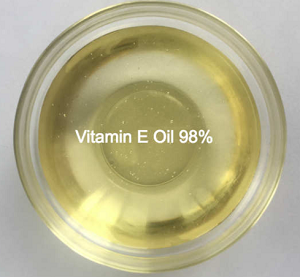
Core efficacy and health value of cocoa powder
Cocoa powder is a food ingredient with both nutritional value and functional properties, and its efficacy and effects are mainly reflected in the following aspects:
Promote digestion and gastrointestinal health
Stomach and digestion: alkaloids in natural cocoa powder can stimulate gastric juice secretion, promote protein digestion, and relieve nutritional diarrhea.
Regulation of intestinal function: Some studies have pointed out that the dietary fiber in cocoa powder may help intestinal peristalsis, but the specific mechanism needs to be verified with more clinical data.
Cardiovascular protection
Cholesterol reduction and vasoprotection: Bioactive substances (e.g., flavanols) in cocoa powder extract protect arteries from cholesterol, and the stearic acid it contains lowers blood cholesterol levels.246 Prevention of cardiovascular disease: Long-term moderate intake of cocoa powder can help reduce cholesterol levels.
Prevention of cardiovascular disease: long-term moderate intake may improve blood vessel elasticity and reduce the risk of high blood pressure and heart disease.
Metabolic regulation and weight management
Weight loss aid: Cocoa butter retained by the degreasing process contains polyphenols that promote fat metabolism; its satiety helps to control appetite at the same time.
Diuretic and detoxification: Helps eliminate excess waste by promoting water metabolism.
Other potential health benefits
Antioxidant and cancer prevention: Flavonoids and antioxidants enhance the functioning of blood vessel wall cells, resisting cancerous lesions, and Dutch studies have shown that long-term intake may prolong life.
Alcohol detoxification and neuromodulation: Cocoa powder can accelerate the conversion of alcohol into water and carbon dioxide, but it should be noted that the small amount of caffeine and theobromine contained in cocoa powder may stimulate the nerves, so sensitive people need to control the amount of intake.
Precautions and consumption advice
Moderate intake: Excessive consumption of caffeine and theobromine may lead to nervousness, nervousness, it is recommended that the daily intake of no more than 20 grams.
Choice and combinations: Prefer low-fat, natural or alkalized cocoa powder, avoid processed products with added sugar and trans fat; can be consumed with milk, honey, or used in baking (e.g. chocolate cake, ice cream).
Special populations: Pregnant women, lactating women and people with high blood pressure should consult a physician before consuming.
The health benefits of cocoa powder need to be based on rational consumption, combined with a balanced diet to maximize its value.
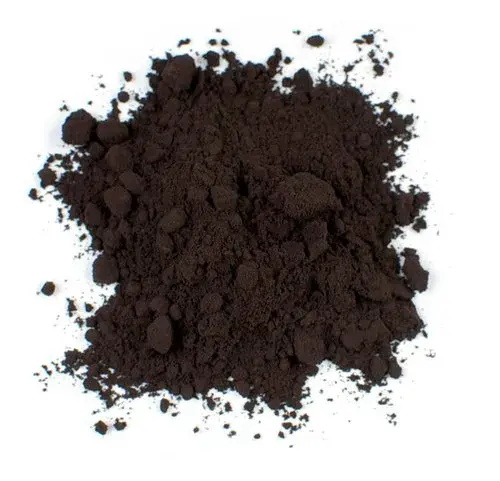
Calcium pantothenate is a derivative of vitamin B5 and is also known as coenzyme A.
Calcium pantothenate is the water-soluble form of vitamin B5 and is widely present in nature, mainly participating in the metabolic processes within the body. Calcium pantothenate has important physiological functions for the human body, especially in promoting metabolism, enhancing immunity, and maintaining skin health. The uses of calcium pantothenate include:
1. Treating vitamin B5 deficiency: As the calcium salt of vitamin B5, calcium pantothenate plays a crucial role in treating diseases caused by vitamin B5 deficiency. Pharmaceutical-grade calcium pantothenate can be used to supplement vitamin B5 and treat health problems caused by vitamin B5 deficiency.
2. Promoting metabolism and energy production: As the precursor of coenzyme A in the body, calcium pantothenate participates in the synthesis of various enzymes, helping to convert food into energy. It has significant effects on maintaining normal energy metabolism, helping to reduce fatigue and enhance physical strength, so calcium pantothenate is often used in health supplements for athletes and physically active individuals.
3. Promoting skin health: Calcium pantothenate helps improve skin health and is often used to treat skin inflammation, acne, and skin allergies.
4. Promoting wound healing: Calcium pantothenate has the effect of promoting cell regeneration and tissue repair, so it can accelerate wound healing and reduce scar formation during the healing process. It is often used in topical medications or dressings to help speed up the recovery of skin damage.
5. As a nutritional supplement: Calcium pantothenate, as an important source of vitamin B5, is often added to various multivitamin and mineral supplements for daily health care. It can help enhance immunity, improve the body's stress resistance, and improve overall health status.
6. Hair care: Due to its ability to promote cell growth, calcium pantothenate is often added to hair care products to improve hair health. By promoting metabolism at the hair root, it helps prevent hair loss and promotes the growth of new hair.
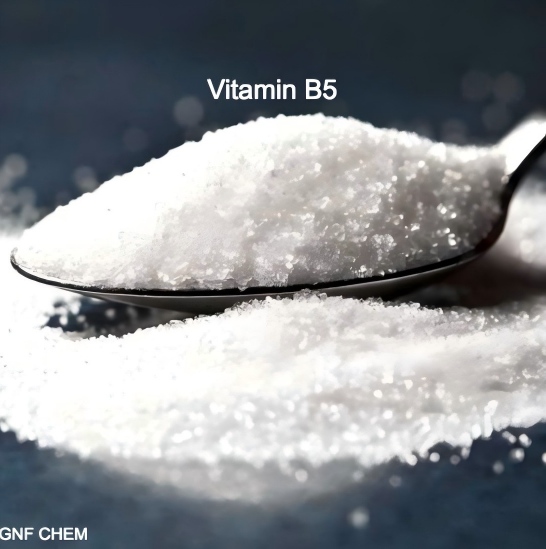
Vitamin C (also known as ascorbic acid) offers numerous benefits for beauty and skin care. This is mainly because it plays a crucial role in skin health and antioxidant functions. Here are the specific effects of vitamin C in beauty and skin care:
Promote collagen synthesis: Vitamin C is a key component in the formation of collagen, and collagen is an important protein that maintains skin elasticity, firmness, and a youthful appearance. By promoting the production of collagen, vitamin C helps to reduce the appearance of wrinkles and fine lines.
Antioxidant effect: Vitamin C is a powerful antioxidant that helps to resist damage caused by free radicals. Free radicals are generated by environmental factors such as ultraviolet rays and pollution, and they can damage skin cells and accelerate the aging process. By neutralizing these free radicals, vitamin C helps protect the skin from damage.
Whitening effect: Vitamin C also has a whitening effect. It can help reduce spots and dullness, making the skin tone more uniform and bright. This is because vitamin C can inhibit the formation of melanin, which is the main cause of skin pigmentation.
Enhance skin barrier function: Vitamin C also helps to enhance the skin's barrier function, enabling it to better resist external environmental influences and thus maintaining skin health.
Constricting pores and toning the skin: Besides having the function of whitening the skin, vitamin C can also shrink pores and adjust the skin texture. When you are under a lot of work or life pressure, your skin will become very delicate and prone to wrinkles. If you supplement with sufficient vitamin C, it can promote the proliferation of collagen in the dermis layer of the skin, making the skin look elastic and not saggy.
In conclusion, vitamin C plays a crucial role in beauty and skincare. By promoting collagen synthesis, providing antioxidant protection, whitening the skin, and enhancing the skin's barrier function, vitamin C helps maintain the skin's youthfulness, health, and beauty.
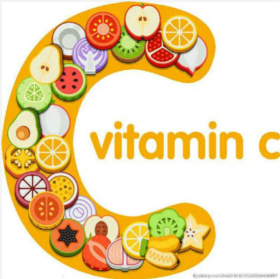
Overview of Allulose
Allulose (D-Allulose) is a rare natural monosaccharide that belongs to the ketose family and is a diastereoisomer of fructose. It was first discovered in wheat, and later was also detected in raisins, dried figs, and brown sugar. Due to its unique sweet taste and low-calorie characteristics, allulose has gained significant attention in recent years and is regarded as a new generation of natural healthy sweetener.
Chemical Properties and Sweetness Characteristics
The chemical formula of allulose is C6H12O6, and its sweetness is approximately 70% of that of sucrose. It has extremely low calorie value, with each gram of allulose containing no more than 0.39 kilocalories. In contrast, sucrose has a calorie value of no more than 4 kilocalories per gram. This low-calorie characteristic makes allulose an ideal choice for those looking to lose weight and control blood sugar.
Health Benefits
Studies have shown that allulose not only has a moderate sweetness but also possesses various health benefits. It can help alleviate the increase in blood sugar after eating, which is beneficial for diabetes management and weight control. Additionally, allulose has antioxidant, neuroprotective, and lipid-regulating functions, which give it a wide range of application prospects in functional foods and health supplements.
Conclusion
In conclusion, alocinose is a low-calorie and highly safe natural sweetener with multiple health benefits and broad application prospects. With the advancement of production technology and the growth of market demand, alocinose is expected to be more widely used and recognized globally.
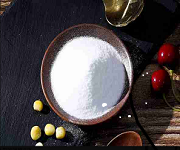
The core mechanism and classification of active agent
surfactant is a class of chemical substances that can significantly reduce interfacial tension and improve the surface properties of substances, and its molecular structure contains both hydrophilic and lipophilic (hydrophobic) groups, and this “amphiphilicity” makes it able to be arranged in the different phase interfaces (such as oil-water interfaces and solid-liquid interfaces), so that it can play a variety of functions. This “amphiphilicity” enables them to be oriented at different phase interfaces (e.g., oil-water interface, solid-liquid interface) and thus perform multiple functions. According to the chemical structure and properties, active agents are mainly divided into two categories: inorganic active agents and organic active agents:
Inorganic active agents: including oxides (e.g. zinc oxide), hydroxides (e.g. calcium hydroxide), etc., mainly used in industrial scenarios, such as rubber vulcanization, which can improve the efficiency of vulcanization1.
Organic active agents: covering fatty acids, amines, soaps, and surfactants, etc., of which the surfactants are the most widely used, and can be further divided into anionic (e.g. anhydrous) types (e.g. solid-liquid interfaces) by the ionic types They can be further divided into anionic (e.g. sodium straight-chain alkylbenzene sulfonate), cationic, nonionic (e.g. fatty alcohol polyoxyethylene ether) and amphoteric14.
Main roles and application scenarios of surfactants
Emulsifying and dispersing roles
Emulsifying is one of the most core functions of surfactants, which can make immiscible liquids (e.g. oil and water) to form stable emulsions by lowering the interfacial tension between oil and water. Examples:
Cosmetics: In products such as face creams and shampoos, surfactants mix oil and water evenly to ensure a fine and stable texture.
Food industry: used in the production of salad dressings, ice cream, etc., so that the oil is dispersed into tiny droplets to improve the taste and shelf life.
Pharmaceutical field: Preparation of emulsion drugs (e.g. intravenous fat emulsion), to improve the solubility and bioavailability of drugs.
Solubilizing effect
After forming micelles in water, surfactants can wrap and dissolve insoluble or slightly soluble organic substances (e.g. spices, drugs) to form a transparent solution. For example:
Daily chemical products: solubilizing fragrances in shower gel to avoid stratification or precipitation.
Pharmaceutical field: increase the solubility of insoluble drugs to enhance the efficacy of .
Summary
active agent through the interfacial nature of the regulation, in the industry, daily chemicals, pharmaceuticals, food and other fields to play an irreplaceable role. Among them, surfactants are dominated by emulsifying, solubilizing and washing functions, while special bioactive agents (e.g., bovine lung surfactants) have important medical values. In the future, new green surfactants (e.g., degradable, low irritation types) and their application in the fields of new energy and environmental protection will become the development trend.
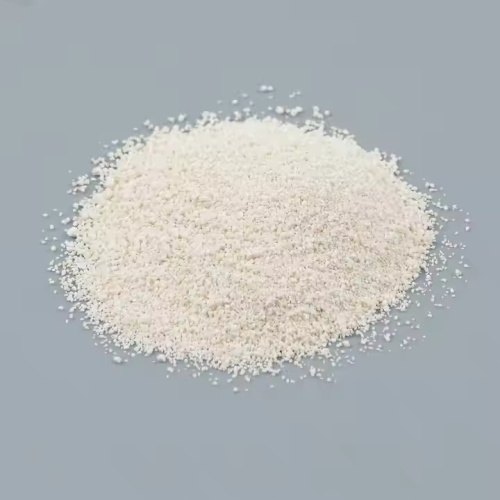
Innovate Your BBQ Restaurant with High-End Restaurant BBQ Equipment
Opening a restaurant-style BBQ can be exciting, but standing out in a competitive market requires more than just delicious meat. Modern restaurant Korean BBQ equipment, like smokeless Korean BBQ grills, smokeless equipment and Korean BBQ tables, can completely transform your customers’ dining experience. By combining high-quality equipment with your unique flavors, your BBQ restaurant can offer a comfortable, clean, and interactive experience that keeps diners coming back.

1. Upgrade the Dining Experience with Advanced Korean BBQ Equipment
One of the biggest challenges in BBQ restaurants is managing smoke, odors, and uneven cooking. With high-end smokeless grillsand smokeless equipment, restaurants can maintain a clean and inviting atmosphere. Elegant Korean BBQ tables not only look stylish but also provide a comfortable grilling experience, keeping diners’ clothes and hair free from smoke.2. Differentiate Your Menu with Multi-Functional BBQ Equipment
Modern restaurant Korean BBQ equipment allows you to offer more than just grilled meat. Consider combining BBQ with hot pot or specialty grills using multifunctional tables. This flexibility lets you provide themed sets, such as seafood BBQ, premium beef combos, or spicy Korean-style BBQ, creating a memorable and unique experience that encourages repeat visits.
3. Improve Restaurant Efficiency and Safety
High-quality BBQ equipment also improves kitchen and service efficiency. Easy-to-clean grill plates and induction cookers reduce labor costs and turnaround time. Stable, adjustable heat ensures consistent cooking results for your staff or diners. Certified equipment (CE, UL, SGS) also guarantees safety, giving restaurant owners peace of mind.4. Marketing and Brand Advantages
Using high-end, modern equipment can become a unique selling point for your restaurant. Promote your smokeless and hygienic BBQ experience on social media and in marketing materials. Visually appealing grill tables encourage diners to take photos and share on platforms like Instagram, naturally driving traffic to your restaurant. Combining this with your signature marinades or sauces creates a compelling brand story that is hard for competitors to replicate.
Investing in advanced restaurant BBQ equipment is a strategic move to elevate the dining experience, improve efficiency, and differentiate your restaurant. By offering clean, comfortable, and interactive BBQ dining, your restaurant can attract new customers and build a strong reputation.
How to Buy Hot Pot and Korean BBQ Equipment for Your Restaurant from China
Are you planning to open a hot pot or Korean BBQ restaurant? Buying the right hot pot and Korean equipment is the first step to success — and sourcing from China can save you money while giving you more choices.
But are you worried about the risks of buying from a supplier so far away?You're not alone — many restaurant owners share the same concern. That's why it’s important to choose a reliable partner who can guide you every step of the way.

Here’s a simple guide to help you purchase restaurant hot pot and Korean BBQ equipment from China smoothly and safely.
1. Know What Equipment You Need
- Before contacting suppliers, list the products you need. Common items include:
- Hot pot induction cookers (built-in or tabletop)
- BBQ grills (gas, electric, or charcoal)
- Hot pot tables / BBQ tables
- Exhaust and purification systems
- Soup pots and accessories
Knowing your restaurant layout and concept helps you decide if you need individual pots, shared pots, or combined hot pot & BBQ tables.
2. Find a Reliable Supplier
Look for a professional manufacturer or one-stop supplier who specializes in hot pot and BBQ restaurant equipment. You can start by searching on Google using keywords like “hot pot equipment supplier in China” or “Korean BBQ grill supplier.” This gives you access to official websites and direct contacts.
- Business license and export experience
- Product certifications (CE, ETL, etc.)
- Product customization services
- Customer reviews or overseas cases
- Clear communication and fast response
3. Ask for Product Details and Samples
Good suppliers will give you:
- Equipment specifications and photos
- Material information (e.g., stainless steel, Schott glass, titanium panels)
- Power requirements (voltage, wattage)
- Installation guides
- Sample options if needed
Requesting a sample or trial order helps you check the quality before buying in bulk.
4. Confirm Customization Options
If you have special needs — such as table sizes, colors, or logo printing — confirm whether the supplier offers OEM/ODM service. Many Chinese factories can customize:
- Table shape, color, and materials
- Grill or cooker positions
- Table frames and built-in exhaust systems
- Packaging and instruction manuals
5. Discuss Shipping and Delivery
- Check if the supplier provides:
- Door-to-door shipping
- DDP (Delivered Duty Paid) service
- Sea freight or air freight options
- Packaging suitable for overseas transport
A good supplier will help you choose the safest and most cost-effective shipping method for your location.
6. After-Sales Support
Choose a supplier that offers:
- Installation guides or videos
- Warranty and spare parts
- Technical support after delivery
This is especially important for electrical products like induction cookers or BBQ grills.
Buying hot pot and BBQ equipment from China can be a smart move for your restaurant business — as long as you work with a trustworthy and experienced supplier.
Looking for a reliable one-stop supplier? Contact us at CENHOT — we’ve been helping restaurants around the world for over 20 years with hot pot and BBQ equipment that fits every style.
Background and core significance of the approval
In July 2025, the National Health Commission officially approved Allulosed as a new food ingredient, marking the official entry of this natural sweetener into the domestic market, which has been called “the most promising sucrose substitute”. The approval, which took five years of technical review, covers two production processes: microbial fermentation (direct fermentation of Microgen Synthesis AS10 strain) and enzyme conversion (COFCO), with Microgen Synthesis's one-step fermentation method being the first synthetic biotechnology application case in China.13 The approval not only fills the gap in domestic Alozone Sugar compliance, but also promotes the upgrading of sugar substitutes industry from chemical synthesis to natural biomanufacturing, and provides a new source of sweetener for the food and beverage, pharmaceutical, and other fields. Food and beverage, pharmaceuticals and other fields to provide low-sugar solutions.
Multiple application scenarios
Food and beverage field: it can be used in sugar-free beverages, bakery pastries, candies, etc., solving the problem of hard texture of traditional sugar substitute.
Medicine and health field: with the physiological effects of regulating blood sugar and inhibiting fat accumulation, it is suitable for diabetic food and weight management products.
Global Market Recognition: It has been licensed by 14 countries such as the U.S., Japan, Korea, etc. The global market size will be about USD 283 million in 2023, and is expected to reach USD 509 million in 2030, with a compound annual growth rate of 8.6%.
Market Reaction and Capital Heat
Stock Performance: The news of approval pushed the sugar substitute plate stronger, Bowling Green, Bailongchuangyuan and other companies rose, sugar substitute index rose 28.24% during the year.
Downstream demand: Yili, Coca-Cola, Yuanqi Forest and other head brands have laid out the relevant applications, the beverage industry as the largest application area (accounting for 50%) will become the key to release.
Industry Challenges and Future Trends
Short-term Constraints
Cost Control: Despite the lower cost of bio-fermentation method compared with the traditional process, large-scale production still needs to break through the efficiency of bacterial strains, enzyme reuse and other technical bottlenecks.
Rhythm of production capacity release: most of the expansion projects will be put into production in 2025-2027, and short-term supply is limited, which may lead to high prices.
Long-term development opportunities
Policy dividend: domestic sugar shortage and sugar reduction policy double drive, Alozone sugar is expected to replace part of the sucrose and artificial sugar market share.
Technology Iteration: Synthetic biotechnology advancement may further reduce the production cost, and promote the extension of application scenarios to health care products, pharmaceuticals and other high-end fields.
Summarize
The approval of Aloeverose marks the entry of the domestic sugar substitute industry into a new stage of “natural health”. In the short term, production capacity and cost optimization will become the core of competition; in the long term, its potential in functional foods and pharmaceuticals is expected to reshape the industry landscape. With the accelerated production expansion of Microgen Synthesis, Bailong Chuangyuan and other enterprises, 2025-2030 may become the commercialization of Alozone Sugar outbreak period.
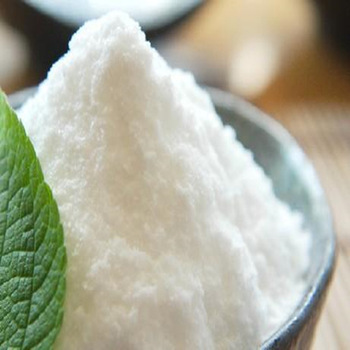
- Buddha Jump Over the Wall1
- Canned Abalone2
- Canned Turtle Soup1
- Edible Bird's Nest2
- Frozen Foods1
- Frozen Seafood8
- Jelly/Pudding Applications1
- Meat Product Applications2
- Others Applications5
- Plant-based meat Product Applications1
- SURIMI2
- Soft Candy1
- Soft Candy Applications4
- bottle1
- can end2
- packaging film2
- tableware3